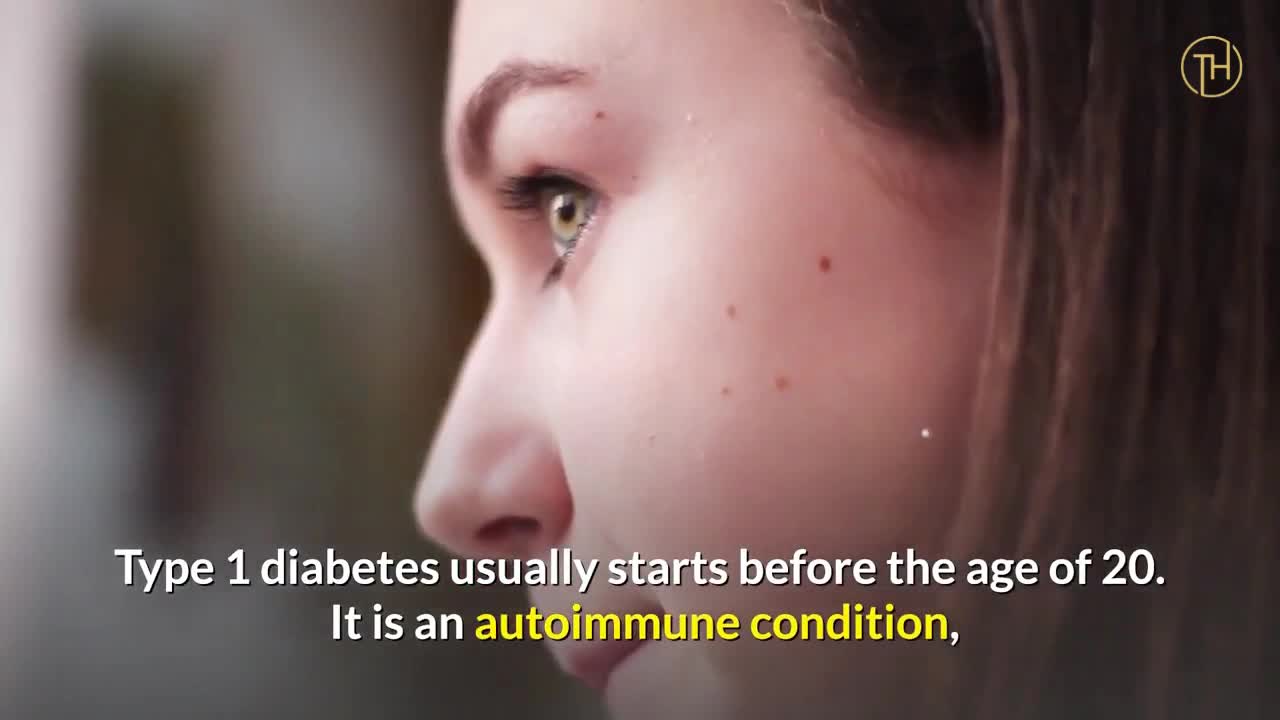Premium Only Content

Type II Diabetes _- Causes, Risk Factors And Treatment
Glucose is the main source of energy production in our body. Normal blood glucose levels should be between 60 to 140 mg/dl in order to supply cells of the body with its required energy. Euglycemia, or blood glucose within the normal range, is naturally ideal for the body’s proper functioning. A good balance between hormones of the pancreas, including insulin and glucagon, intestinal and adrenal hormones is required to maintain normal blood glucose levels.
Cells can also use proteins and fats in order to produce energy. However, glucose is the major energy source in our body.
Glucose is absorbed through the intestines in to the blood stream and then stored by the body in the form of glycogen within the liver and muscle tissue.
Regulation of blood glucose is largely done through the pancreatic hormones. Insulin, and glucagon are the two most important ones. Each of these hormones have opposite actions.
Insulin, secreted by the pancreatic beta cells, lowers the blood glucose levels. Whereas glucagon, secreted by the pancreatic alpha cells, increases the blood glucose levels.
Diabetes is a condition characterized by elevated blood glucose levels than normal.
There are 2 main types of diabetes. Type 1 diabetes usually starts before the age of 20. It is an autoimmune condition, characterized by the destruction of the pancreatic beta cells, leading to absolute insulin deficiency. So, these people will have to take exogenous insulin throughout their lives.
On the other hand, type 2 diabetes, which is the most common type, usually appears in adults who are obese.
Type 2 diabetes is characterized by a combination of peripheral insulin resistance and inadequate insulin secretion by pancreatic beta cells.
In insulin resistance, the cells do not respond to insulin as in normal individuals. So, their glucose uptake will be impaired. And as a result, glucose will build up in the blood, leading to high blood glucose levels.
For type 2 diabetes to occur, both insulin resistance and inadequate insulin secretion must exist. For example, all overweight individuals have insulin resistance, but diabetes develops only in those who cannot increase insulin secretion sufficiently to compensate for their insulin resistance.
The etiology of type 2 diabetes appears to involve complex interactions between environmental and genetic factors.
Major risk factors for the development of type 2 diabetes include the following.
Age greater than 45 years.
Sedentary lifestyle.
High calorie intake.
Obesity.
Family history of type 2 diabetes in a first-degree relative, like parents or a sibling.
Hispanic, Native American, African American, Asian American, or Pacific Islander descent.
High blood pressure.
High blood cholesterol.
History of gestational diabetes in women.
And polycystic ovarian syndrome.
Many patients with type 2 diabetes are asymptomatic, and their disease remains undiagnosed for many years.
Classic symptoms of diabetes include, polyuria, or increased urination, polydipsia, or increased thirst, polyphagia, or increased hunger, and weight loss. Other symptoms that may suggest hyperglycemia include blurred vision, lower limb paresthesia, lack of energy, poor wound healing, and frequent infections.
Long term diabetes is associated with the development of a number of complications.
These complications can be broadly divided in to 2 groups; microvascular complications, and macrovascular complications.
Microvascular complications typically involve the arteries. 3 major microvascular complications are, diabetic retinopathy, which can lead to adult onset blindness, diabetic nephropathy, which is the leading cause for chronic kidney disease, and diabetic neuropathy, which affects the peripheral nerves.
Macrovascular complications increase the risk of heart attack, stroke, and peripheral vascular disease.
Lifestyle changes are the first line treatment of type 2 diabetes.
These include, regular exercising, low calorie diet, quitting smoking, weight loss etc.
If these changes are unable to provide a considerable improvement, then anti diabetic drugs are indicated.
Because type 2 diabetic patients are not completely lack of insulin, initially they do not require exogenous insulin.
Metformin is the first line drug in the medical therapy of type 2 diabetes. In addition, other anti diabetic drugs can also be used in combination with metformin.
However, as the disease progresses, the pancreas will gradually lose its ability to secrete insulin, and ultimately, these patients will also require exogenous insulin to maintain a healthy blood glucose level.
#DiabetesTypeII #Diabetes #MedToday #PatientEducation
-
 1:28:34
1:28:34
Mark Kaye
3 hours ago🔴 How Charlie Kirk's Killer, Tyler Robinson, Was Caught!
11.6K14 -
 LIVE
LIVE
Jeff Ahern
49 minutes agoFriday Freak out with Jeff Ahern
257 watching -
 1:29:00
1:29:00
Russell Brand
4 hours agoLaura Loomer: The Most Banned Woman in the World - SF632
47.5K81 -

Robert Gouveia
4 hours agoCharlie's Murderer CAUGHT! Name and Details RELEASED! Deranged Libs FIRED!
5.21K15 -
 2:14:43
2:14:43
The Quartering
3 hours agoCharlie KIrk Assassin CAUGHT, Motive Revealed, Who He Was & His Confession
61.6K76 -
 1:34:19
1:34:19
Sean Unpaved
3 hours agoTNF Recap: Packers Roll, Commanders Crumble & NFL/CFB's Week 2-3 Predictions
32.1K -
 2:07:09
2:07:09
The Culture War with Tim Pool
4 hours agoCharlie Kirk Suspect Captured, Antifa Confirmed | The Culture War with Tim Pool
133K155 -
 1:50:59
1:50:59
Steven Crowder
6 hours agoBREAKING: Shooter Caught & Shooting Eyewitness Joins to Discuss What He Saw
629K641 -
 2:27:40
2:27:40
Reidboyy
3 hours ago $0.21 earnedHow To Make $$$ in Delta Force Console Operations!
19.6K -
 1:43:50
1:43:50
The Mel K Show
4 hours agoMORNINGS WITH MEL K - Desperate Globalist Agenda Continues Unabated as Manufactured Chaos Abounds 9-12-25
54.5K9